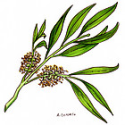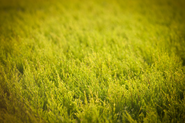-
About
- About Listly
- Community & Support
- Howto
- Chrome Extension
- Bookmarklet
- WordPress Plugin
- Listly Premium
- Privacy
- Terms
- DMCA Copyright
- © 2010-2025 Boomy Labs

 Erika Yigzaw
Erika Yigzaw
Listly by Erika Yigzaw
Here are a list of resources for Tea Tree (Melaleuca alternifolia) Essential Oil

The essential oil from Melaleuca alternifolia has been used for pharmaceutical and household products and as an antiseptic treatment for human ailments. Growing public concern over the use of synthetic pesticides emphasizes the need for alternative treatm...

The essential oil of Melaleuca alternifolia (tea tree) has broad-spectrum antimicrobial activity. The mechanisms of action of tea tree oil and three of its components, 1,8-cineole, terpinen-4-ol, and α-terpineol, against Staphylococcus aureus ATCC 9144 were investigated. Treatment with these agents at their MICs and two times their MICs, particularly treatment with terpinen-4-ol and α-terpineol, reduced the viability of S.

Tea tree oil is an essential oil distilled from the leaves of Melaleuca alternifolia, a plant native to Australia. It has been used in traditional medicine to treat colds, cough and skin infections. The medicinal properties of tea tree oil were first reported in the 1920s.

Melaleuca alternifolia is an evergreen Shrub growing to 6 m (19ft) by 4 m (13ft). It is hardy to zone 9. It is in leaf 12-Jan It is in flower in June. The flowers are hermaphrodite (have both male and female organs) and are pollinated by Insects.Suitable for: light (sandy), medium (loamy) and heavy (clay) soils and prefers well-drained soil.

What is tea tree oil?Tea tree oil can kill bacteria and fungi. It comes from the evergreen leaves of the Australian Melaleuca alternifolia tree. Tea tree oil has been used in surgery, burn care, and dental care.Numerous tea tree oil body care products are available, including soap, shampoo, toothpaste, lip balm, topical (used on the skin) cream, and essential oil.What is tea tree oil used ...

(As of February 17, 2014) Registered articles: 7,940

Abstract Head lice infestation is an emerging social problem in undeveloped and developed countries. Because of louse resistance increasing, several long-used insecticidal compounds have lost their efficacy, and alternatives, such as essential oils, have been proposed to treat this parasitic infestation.
